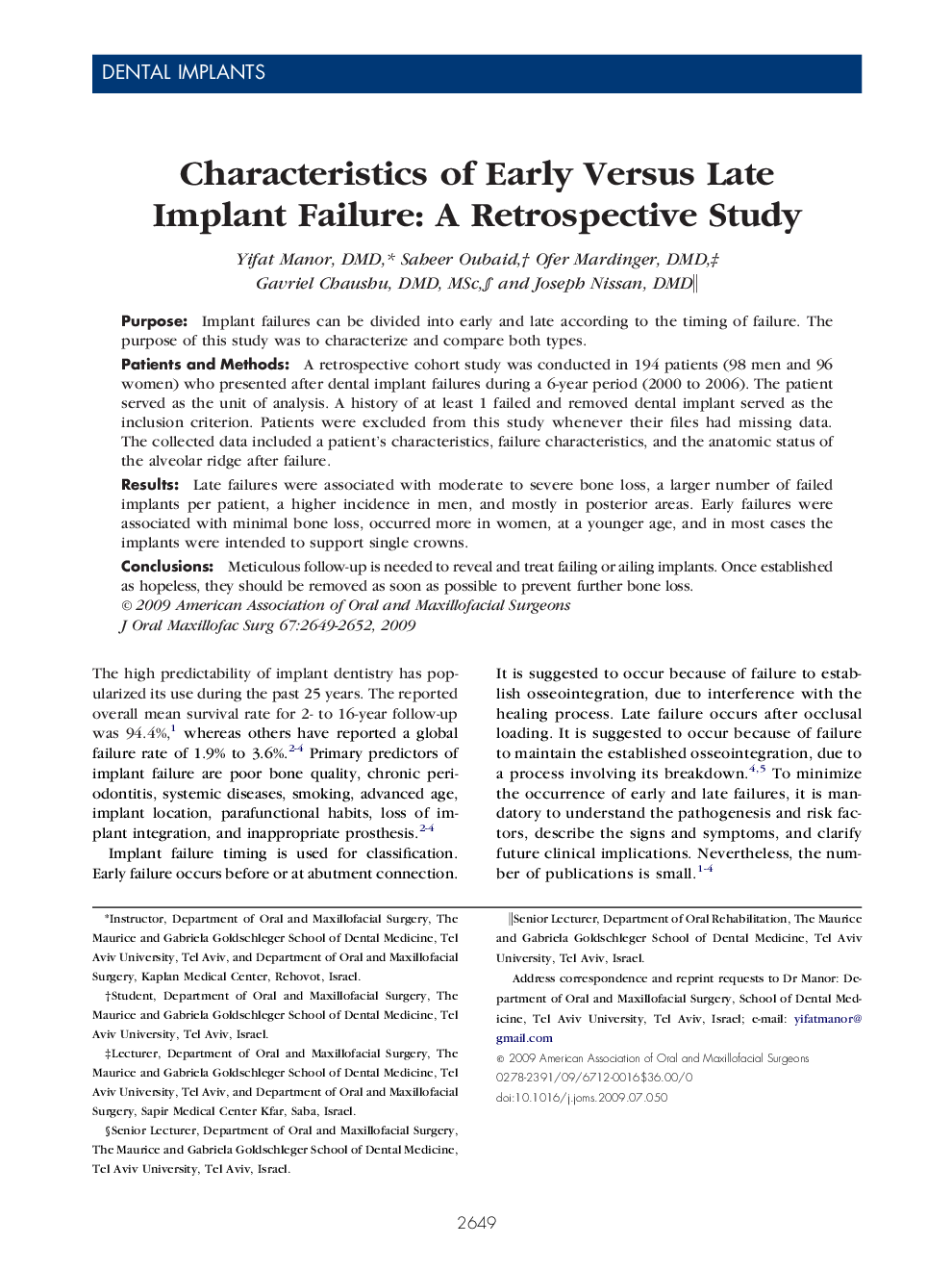| کد مقاله | کد نشریه | سال انتشار | مقاله انگلیسی | نسخه تمام متن |
|---|---|---|---|---|
| 3158442 | 1198234 | 2009 | 4 صفحه PDF | دانلود رایگان |

PurposeImplant failures can be divided into early and late according to the timing of failure. The purpose of this study was to characterize and compare both types.Patients and MethodsA retrospective cohort study was conducted in 194 patients (98 men and 96 women) who presented after dental implant failures during a 6-year period (2000 to 2006). The patient served as the unit of analysis. A history of at least 1 failed and removed dental implant served as the inclusion criterion. Patients were excluded from this study whenever their files had missing data. The collected data included a patient's characteristics, failure characteristics, and the anatomic status of the alveolar ridge after failure.ResultsLate failures were associated with moderate to severe bone loss, a larger number of failed implants per patient, a higher incidence in men, and mostly in posterior areas. Early failures were associated with minimal bone loss, occurred more in women, at a younger age, and in most cases the implants were intended to support single crowns.ConclusionsMeticulous follow-up is needed to reveal and treat failing or ailing implants. Once established as hopeless, they should be removed as soon as possible to prevent further bone loss.
Journal: Journal of Oral and Maxillofacial Surgery - Volume 67, Issue 12, December 2009, Pages 2649–2652